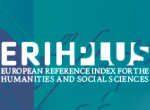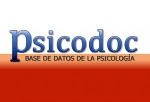Posibilidades de uso de la inteligencia artificial generativa como apoyo a la educación desde la perspectiva de los estudiantes de primaria y secundaria en la República Checa
Agencias de apoyo
- Unión Europea
Resumen
El artículo se centra en las posibilidades de uso de la inteligencia artificial generativa (especialmente LLM) en la educación y la preparación en casa de los alumnos de primaria y secundaria en la República Checa, utilizando los resultados de la encuesta Los alumnos checos y la inteligencia artificial (2024), en la que participaron más de 28.000 encuestados de toda la República Checa. En nuestro artículo, analizamos las diferencias en el uso de la IA entre los alumnos de primaria y secundaria, para qué actividades la utilizan los alumnos y cuáles son las formas más avanzadas de utilizar estas herramientas (dentro y fuera de la escuela) para aumentar la eficacia de la educación; nos centramos en la personalización y la gamificación (incluida la creación de juegos educativos).
Descargas
-
Resumen598
-
pdf EN403
Citas
Allford, J. M., Karacaoglu, Y., & Mocan, S. (2023). Generative Artificial Intelligence. Generative Artificial Intelligence. https://doi.org/10.1596/39959
Ayinde, L., Wibowo, M. P., Ravuri, B., & Emdad, F. Bin. (2023). ChatGPT as an important tool in organizational management: A review of the literature. Business Information Review, 40(3), 137–149. https://doi.org/10.1177/02663821231187991
Bae, H., Jaesung, H., Park, J., Choi, G. W., & Moon, J. (2024). Pre-service Teachers’ Dual Perspectives on Generative AI: Benefits, Challenges, and Integrating into Teaching and Learning. Online Learning, 28(3), 131–156. https://doi.org/10.24059/OLJ.V28I3.4543
Bastani, H., Bastani, O., Sungu, A., Ge, H., Kabakcı, Ö., & Mariman, R. (2024). Generative AI Can Harm Learning. https://doi.org/10.2139/SSRN.4895486
Brandon, B. (2023). Use AI and Gamification to Craft Captivating eLearning . Learning Guild. https://www.learningguild.com/articles/use-ai-and-gamification-to-craft-captivating-elearning/
Capinding, A. T. (2023). Revolutizioning Pre-Calculus Education: Photomath’s AI-Powered Mathematics Tutorship. Problems of Education in the 21st Century, 81(6), 758–775. https://doi.org/10.33225/pec/23.81.758
Cavazos, J. T., Hauck, K. A., Baskin, H. M., & Bain, C. M. (2024). ChatGPT Goes to College: Exploring Student Perspectives on Artificial Intelligence in the Classroom. Teaching of Psychology. https://doi.org/10.1177/00986283241268829
Contreras Kallens, P., Kristensen-McLachlan, R. D., & Christiansen, M. H. (2023). Large Language Models Demonstrate the Potential of Statistical Learning in Language. Cognitive Science, 47(3), e13256. https://doi.org/10.1111/COGS.13256
Diliberti, M. K., Schwartz, H. L., Doan, S., Shapiro, A., Rainey, L. R., & Lake, R. J. (2024). Using Artificial Intelligence Tools in K–12 Classrooms. Using Artificial Intelligence Tools in K–12 Classrooms. https://doi.org/10.7249/RRA956-21
Elstad, E., & Eriksen, H. (2024). High School Teachers’ Adoption of Generative AI: Antecedents of Instructional AI Utility in the Early Stages of School-Specific Chatbot Implementation. Nordic Journal of Comparative and International Education (NJCIE), 8(1). https://doi.org/10.7577/NJCIE.5736
European Commission. (2023). What Is a Large Language Model? https://knowledge-centre-translation-interpretation.ec.europa.eu/en/news/what-large-language-model
Galindo-Domínguez, H., Delgado, N., de la Maza, M. S., & Expósito, E. (2024). An experimental analysis of the relationship between the evaluations of artificial intelligence and pre-service teachers. Edutec, Revista Electrónica de Tecnología Educativa, 89, 84–104. https://doi.org/10.21556/edutec.2024.89.3509
Harry, A. (2023). Role of AI in Education. Interdiciplinary Journal and Hummanity (INJURITY), 2(3). https://doi.org/10.58631/injurity.v2i3.52
Holland, B. J. (2023). ChatGPT 3.5 and 4: Its Ramifications on Librarianship, Academia, Education, Publishing, and the Workplace. Handbook of Research on Advancements of Contactless Technology and Service Innovation in Library and Information Science, 316–340. https://doi.org/10.4018/978-1-6684-7693-2.CH016
Houghton, C., Kazanina, N., & Sukumaran, P. (2023). Beyond the limitations of any imaginable mechanism: large language models and psycholinguistics. http://arxiv.org/abs/2303.00077
IPSOS. (2025). DĚTI A AI Report z dotazování mladých ve věku 12-17 let. https://www.vodafone.cz/_sys_/FileStorage/download/4/3021/ipsos-a-vodafone-deti-a-ai-report.pdf
Jauhiainen, J. S., & Guerra, A. G. (2023). Generative AI and ChatGPT in School Children’s Education: Evidence from a School Lesson. Sustainability 2023, Vol. 15, Page 14025, 15(18), 14025. https://doi.org/10.3390/SU151814025
Kopecký, K., Szotkowski, R., Voráč, D., Krejčí, V., & Dobešová, P. (2023). České školy a umělá inteligence. https://www.e-bezpeci.cz/index.php/ke-stazeni/vyzkumne-zpravy/163-ceske-skoly-a-umela-inteligence-2023/file
Kopecký Kamil. (2024). S generativní umělou inteligencí ve škole opatrně, moc prosím (3 příklady použití GenAI) . Kamil Kopecký (Blog). https://kopeckykamil.cz/index.php/blog/405-s-generativni-umelou-inteligenci-ve-skole-opatrne-nekolik-prikladu
Kopecký Kamil, Voráč Dominik, & Szotkowski René. (2024). Čeští žáci a umělá inteligence.
Kumar, P. (2023). Large Language Models Humanize Technology. https://arxiv.org/abs/2305.05576v1
Lyu, Z. (2023). Generative artificial intelligence in the metaverse era. Cognitive Robotics, 3, 208–217. https://doi.org/10.1016/J.COGR.2023.06.001
Marchant, N. (2021). The gender gap in science and technology, in numbers. World Economic Forum. https://www.weforum.org/stories/2021/07/science-technology-gender-gap/
Mendoza, K. K. R., Arteaga, Ma. A. M., & Villapudua, K. Y. C. (2024). Experiences in Training Teachers at Universities in Baja California on Generative AI. Education & Information Technology, 29–37. https://doi.org/10.5121/CSIT.2024.141203
Microsoft. (2023). What are large language models (LLMs)? https://azure.microsoft.com/en-us/resources/cloud-computing-dictionary/what-are-large-language-models-llms
Okaiyeto, S. A., Bai, J., & Xiao, H. (2023). Generative AI in education: To embrace it or not?. In International Journal of Agricultural and Biological Engineering (Vol. 16, Issue 3). https://doi.org/10.25165/J.IJABE.20231603.8486
OpenAI. (n.d.). Introducing ChatGPT. Retrieved November 1, 2023, from https://openai.com/blog/chatgpt
OpenAI. (2025). Introducing deep research. https://openai.com/index/introducing-deep-research/
Osamor, A., Ifelebuegu, Kulume, P., & Cherukut, P. (2023). Chatbots and AI in Education (AIEd) tools: The good, the bad, and the ugly. Journal of Applied Learning and Teaching, 6(2). https://doi.org/10.37074/jalt.2023.6.2.29
Prather, J., Benario, J. G., Norouzi, N., Porter, L., Smith, D. H., Leinonen, J., Lau, S., Opel, S., Reeves, B. N., Strickroth, S., Kiesler, N., MacNeil, S., Pettit, V., Savelka, J., & Zingaro, D. (2024). How Instructors Incorporate Generative AI into Teaching Computing. Proceedings of the 2024 on Innovation and Technology in Computer Science Education V. 2, 2, 771–772. https://doi.org/10.1145/3649405.3659534
Spector, C. (2023). Feedback from an AI-driven tool improves teaching, Stanford-led research finds. Stanford Report. https://news.stanford.edu/stories/2023/05/ai-feedback-tool-improves-teaching-practices
STEM. (2024). How Do We Learn? https://jakseucimemy.cz/en/#researchconclusions
Tulsiani, R. (2024). Gamification With ChatGPT For Engaging eLearning Experiences. Elearning Industry. https://elearningindustry.com/the-art-of-chatgpt-driven-gamification
UNESCO. (2023). Guidance for generative AI in education and research. In Guidance for generative AI in education and research. https://doi.org/10.54675/ewzm9535
Villan, F., & Santos, R. P. dos. (2023). ChatGPT as Co-Advisor in Scientific Initiation: Action Research with Project-Based Learning in Elementary Education. Acta Scientiae, 25(6), 60–117. https://doi.org/10.17648/acta.scientiae.7474
Los artículos que se publican en esta revista están sujetos a los siguientes términos:
1. El Departamento de Métodos de Investigación y Diagnóstico en Educación de la Universidad de Murcia (España), junto con el Servicio de Publicaciones de la Universitdad de Murcia (Editum) son los editores de la revista REIFOP y conserva los derechos patrimoniales (copyright) de los artículos publicados, permitiendo la reutilización de las mismos bajo la licencia de uso indicada en el punto 2.
2. Las obras se publican en la edición electrónica de la revista bajo una licencia Creative Commons Reconocimiento-NoComercial-SinObraDerivada 3.0 España (texto legal). Se pueden copiar, usar, difundir, transmitir y exponer públicamente, siempre que: i) se cite la autoría y la fuente original de su publicación (revista, editores y URL de la obra); ii) no se usen para fines comerciales; iii) se mencione la existencia y especificaciones de esta licencia de uso.
3. Condiciones de auto-archivo. Se permite y se anima a los autores a difundir electrónicamente las versiones pre-print (versión antes de ser evaluada) y/o post-print (versión evaluada y aceptada para su publicación) de sus obras antes de su publicación, ya que favorece su circulación y difusión más temprana y con ello un posible aumento en su citación y alcance entre la comunidad académica. Color RoMEO: verde.















